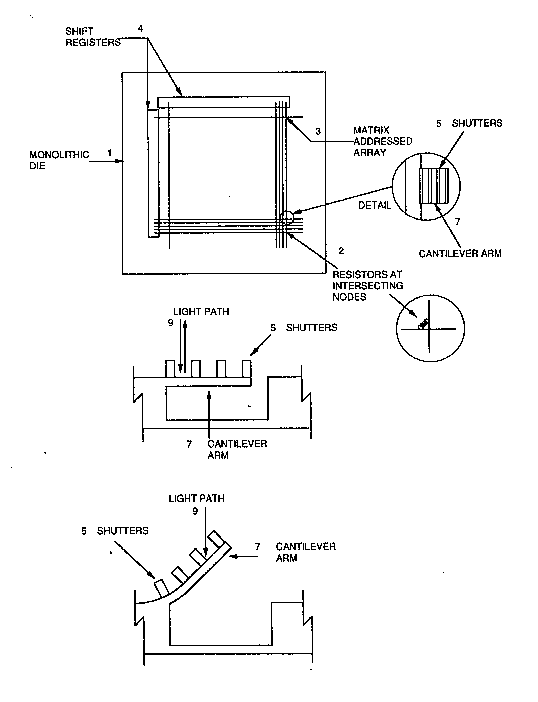Some of the information on this Web page has been provided by external sources. The Government of Canada is not responsible for the accuracy, reliability or currency of the information supplied by external sources. Users wishing to rely upon this information should consult directly with the source of the information. Content provided by external sources is not subject to official languages, privacy and accessibility requirements.
Any discrepancies in the text and image of the Claims and Abstract are due to differing posting times. Text of the Claims and Abstract are posted:
| (12) Patent Application: | (11) CA 2094174 |
|---|---|
| (54) English Title: | MINIATURE HIGH RESOLUTION VIEWSCREEN CANTILEVER I.C. |
| (54) French Title: | CIRCUIT INTEGRE FLEXIBLE MINIATURE POUR ECRAN A HAUTE DEFINITION |
| Status: | Deemed Abandoned and Beyond the Period of Reinstatement - Pending Response to Notice of Disregarded Communication |
| (51) International Patent Classification (IPC): |
|
|---|---|
| (72) Inventors : |
|
| (73) Owners : |
|
| (71) Applicants : | |
| (74) Agent: | |
| (74) Associate agent: | |
| (45) Issued: | |
| (22) Filed Date: | 1993-04-16 |
| (41) Open to Public Inspection: | 1994-10-17 |
| Availability of licence: | N/A |
| Dedicated to the Public: | N/A |
| (25) Language of filing: | English |
| Patent Cooperation Treaty (PCT): | No |
|---|
| (30) Application Priority Data: | None |
|---|
ABSTRACT
A miniature single
monolithic chip is to be used
to create a viewscreen for
computers, television or
video applications. The image
is formed by the bending of
individual cantilever arms
configured in a two
dimensional array. The
bending is activated with
heat caused by the
application of electricity on
a heating or piezoelectric
element which has been
deposited on the arm.
Advantages of this system
are higher contrast, greater
viewing angle, and capablity
of being reflected onto
another viewing surface.
Note: Claims are shown in the official language in which they were submitted.
Note: Descriptions are shown in the official language in which they were submitted.

2024-08-01:As part of the Next Generation Patents (NGP) transition, the Canadian Patents Database (CPD) now contains a more detailed Event History, which replicates the Event Log of our new back-office solution.
Please note that "Inactive:" events refers to events no longer in use in our new back-office solution.
For a clearer understanding of the status of the application/patent presented on this page, the site Disclaimer , as well as the definitions for Patent , Event History , Maintenance Fee and Payment History should be consulted.
| Description | Date |
|---|---|
| Inactive: IPC expired | 2023-01-01 |
| Inactive: IPC from MCD | 2006-03-11 |
| Time Limit for Reversal Expired | 1997-04-16 |
| Application Not Reinstated by Deadline | 1997-04-16 |
| Deemed Abandoned - Failure to Respond to Maintenance Fee Notice | 1996-04-16 |
| Inactive: Adhoc Request Documented | 1996-04-16 |
| Application Published (Open to Public Inspection) | 1994-10-17 |
| Abandonment Date | Reason | Reinstatement Date |
|---|---|---|
| 1996-04-16 |
Note: Records showing the ownership history in alphabetical order.
| Current Owners on Record |
|---|
| RAJA SINGH TULI |
| Past Owners on Record |
|---|
| None |